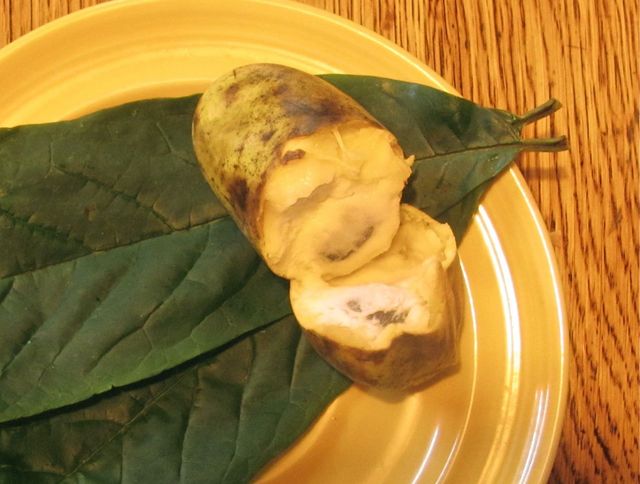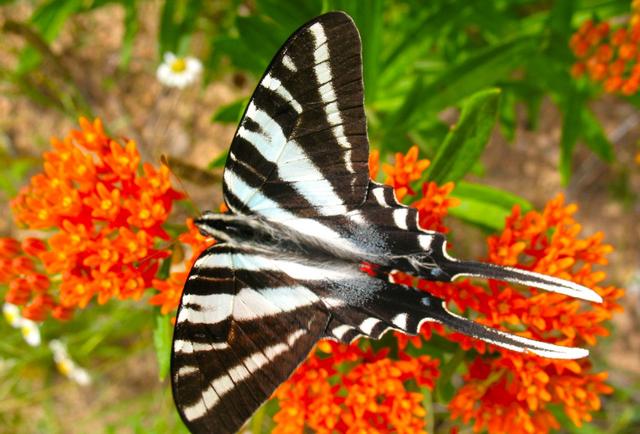| ||||||||||
Dr. Ronald P. Rogers CHIROPRACTOR Support for your body's natural healing capabilities 270-384-5554 Click here for details 


Columbia Gas Dept. GAS LEAK or GAS SMELL Contact Numbers 24 hrs/ 365 days 270-384-2006 or 9-1-1 Call before you dig Visit ColumbiaMagazine's Directory of Churches Addresses, times, phone numbers and more for churches in Adair County Find Great Stuff in ColumbiaMagazine's Classified Ads Antiques, Help Wanted, Autos, Real Estate, Legal Notices, More... 
|
Dr. Ben Arnold: A scientist looks at Pawpaw culture Another look at the "Kentucky Banana" by experts. This treatise follows another scholarly look at the prized native fruit by Historian Mike Watson. (Comments re article 74496 Mike Watson On Pawpaw vs Papaw) There is a latent commercial potential for the beautiful tree with the distinctively spicy pulp. Dr. Arnold asks, 'Wouldn't it be great for Adair County to be the first to commercialize pawpaw extracts and develop pawpaw farms?" Click on headline for complete essay, with compelling concepts most of us never knew: That it's foliage is a natural insecticide - except for the beautiful Zebra butterfly. That some people are allergic to the fruit, and why. By Ben Arnold The pawpaw is indeed a very interesting fruit and plant and Kentucky is in the center of the optimum region for growing them. The chemistry and story of the pawpaw is much too complex and lengthy to present here but a few facts may be of interest to your readers.The American Indians and early settlers enjoyed and counted on the fruit for a reliable food source. The fruit contains more nutrients than most of our common fruit, including large quantities of vitamins C, B1 and B2 and many minerals. Toxins are present in parts of plant While it is commonly known in our region that some people are "allergic" to pawpaw, some of its unique properties may not be recognized. The leaves, stems, seeds, and maybe the skin contain the biochemical 'annonaceous acetogenin' that is very toxic. The ripe fruit contains a very small amount of this compound but the green fruit contains more. Whether the reported allergic reactions are due to accidentally eating some skin or seeds or that some individuals are just more sensitive to the smaller amounts in the ripe fruit is not known. How the toxins exert effects Bugs and insects don't eat the fruit or the leaves For those who are more observant, you may have noticed that insects and bugs don't eat the fruit or the leaves? There is only one known insect that eats the leaves of the pawpaw, the beautiful Zebra swallowtail butterfly you often see in these parts. This butterfly is apparently immune to the acetogenins but retains some concentrations in their bodies for significant periods so that birds, or other predators won't eat them. I personally have taken the leaves from the pawpaw in the fall and spread around my small garden the next summer. Pawpaw leaves kept insects out of garden - without using sprays I had no insects and applied no sprays! I don't want to create any unwarranted concerns, but these chemicals are powerful. Epidemiology studies have reported an increased rate of atypical Parkinson's disease in some South American populations that eat large quantities of other fruit that contain these same compounds. These include the Cherimoya, Soursop (graviola), and others S America fruits. So until we have better scientific studies, my advice is be careful to not swallow the seeds or skin. This intriguing plant may some day lead to exciting advancements in medicine or agriculture. This story was posted on 2015-04-12 06:53:38
Printable: this page is now automatically formatted for printing.
Have comments or corrections for this story? Use our contact form and let us know.
More articles from topic Farm and Garden:
Forage, Cover Crop Field day 9 Apr 2015 at Marshall Irvin farm The Gardener's Group promotes growing, eating healthier foods Good Bug/Bad Bug and how to ID what is in your garden KY Ag Dept seeks applications for specialty crop projects Adair Co. residents eligible for Sue Stivers scholarship Gov. Beshear signs Master Settlement Agreement bill Daffodil Watch: Mary Hartman had 50 blossoms 16 Mar 2015 Comer welcomes WKU to KY Proud Farm-to-Campus program Farmers Market 101 session Mon 16 Mar 2016 Kentucky named to Walmart funded Farm-to-School iniative View even more articles in topic Farm and Garden |



|
||||||||
|
| ||||||||||
|
Quick Links to Popular Features
Looking for a story or picture? Try our Photo Archive or our Stories Archive for all the information that's appeared on ColumbiaMagazine.com. | ||||||||||
|
Contact us: Columbia Magazine and columbiamagazine.com are published by Linda Waggener and Pen Waggener, PO Box 906, Columbia, KY 42728. Please use our contact page, or send questions about technical issues with this site to webmaster@columbiamagazine.com. All logos and trademarks used on this site are property of their respective owners. All comments remain the property and responsibility of their posters, all articles and photos remain the property of their creators, and all the rest is copyright 1995-Present by Columbia Magazine. Privacy policy: use of this site requires no sharing of information. Voluntarily shared information may be published and made available to the public on this site and/or stored electronically. Anonymous submissions will be subject to additional verification. Cookies are not required to use our site. However, if you have cookies enabled in your web browser, some of our advertisers may use cookies for interest-based advertising across multiple domains. For more information about third-party advertising, visit the NAI web privacy site.
| ||||||||||





















































